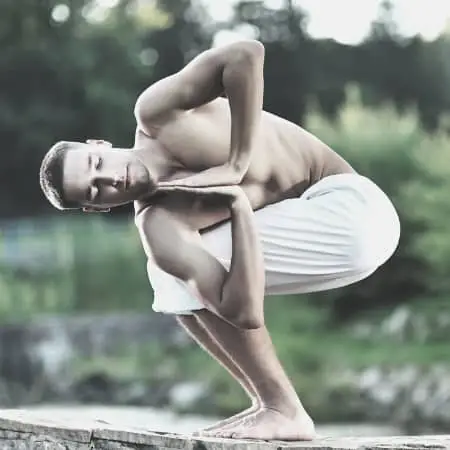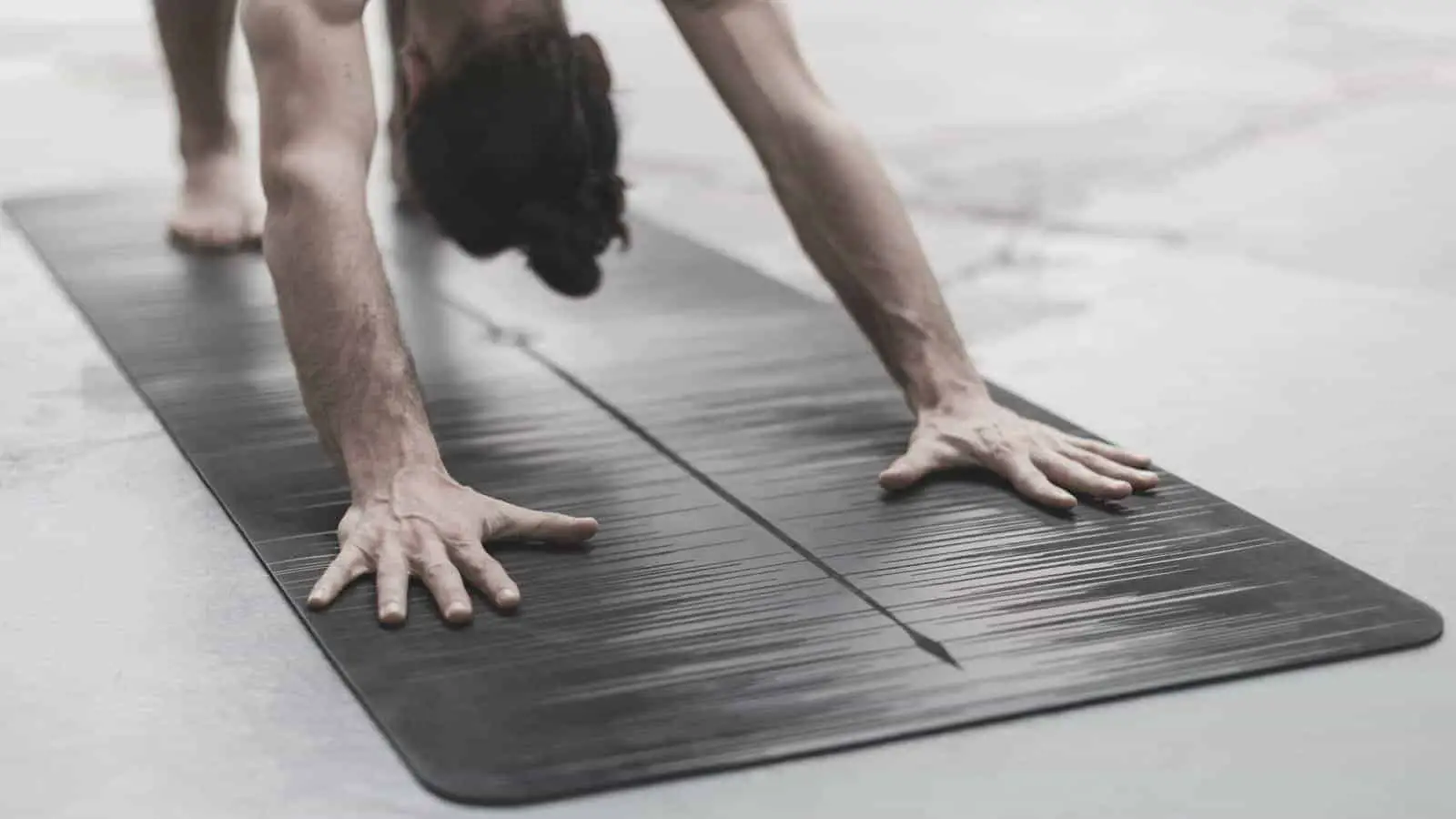With the yoga practice having hit the mainstream in recent years, there are so many styles and types of yoga that are readily accessible. It is really important from time to time to pause and recall the reasons why do we practice yoga?
When it comes to practicing yoga, the ancient teachings guide us toward Enlightenment. Through various methods, disciplines, and practices, we can direct this Human experience toward a Life of fulfillment in Mind, Body, and Spirit. The teachings of yoga lead us toward our fullest potential. Even in this modern era of yoga, with all the various styles and types, it is important to remember the true nature of yoga.
One aspect of yoga, which is relevant throughout the history of yoga, is – alignment in yoga -this concept can have many connotations and perspectives. Still, it is an idea that can help the modern yogi stay connected to its true and honest intention.
Physical alignment is undoubtedly essential when it comes to yoga practice. It gives the practitioner something tangible to focus on as they work on achieving greater self-awareness and presence. Because the asana practice focuses on the moving body and postures, it is a good way for the yogi to bring their attention inward.
As you continue developing and evolving in your yoga practice, that focus can shift to something much more profound. Your self-awareness practice goes beyond the physical parts and dives into the non-physical aspects of the philosophy.
What is alignment in yoga?
Alignment can mean many things. A dictionary definition of the word brings us to this:
- the act of aligning or state of being aligned;
- the proper positioning or state of adjustment of parts (as of a mechanical or electronic device) in relation to each other;
- a forming in line;
- the line thus formed;
- an arrangement of groups or forces in relation to one another.
These explanations can also apply to yoga, both on a physical level and a non-physical plain. Physically, being in alignment in a yoga pose reflects the second definition of the word; adjusting parts of the body in relation to other parts.
What does Body Alignment in Yoga mean?
A good example of adjusting your body to relate to other parts of the body is standing in Mountain Pose (Tadasana or Samasthiti). This yoga posture is typically practiced at the beginning of a yoga class. It allows you as the practitioner to center yourself and prepare your Mind and Body for the upcoming moving practice.
While standing in Mountain Pose, you have your feet about hip-distance apart. You want to feel rooted and fully connected to the ground beneath you. Pay specific attention to how you distribute the weight in your body. In normal circumstances, we do not stand like this. When standing, you’re more likely to shift your weight into one foot, and the feet may even be turned outward. In Mountain Pose, you align yourself so that there is an even distribution of weight between both feet with your toes pointing forward.
What is important in Mountain pose?
There are several things you can consider as you establish yourself in this yoga asana. First, notice if you are sending more weight into one foot than the other. If that is the case, mindfully adjust yourself so that the bodyweight distribution feels more balanced. Another thing that can help is to have something you can see or focus on to help with this alignment.
Having a single alignment line down the center of your yoga mat is a wonderful tool to help with this situation. When coming to Mountain Pose, you can straddle your feet over the centered line. This, essentially, centers your body. You can look down to see that your feet are evenly distanced, creating the desired alignment for the posture.
The decorative yet resourceful middle alignment line on your yoga mat can also help in poses like Downward Facing Dog, Plank Pose, and Revolving Chair Pose.
Alignment in yoga: downward Facing Dog
While in Downward Facing Dog (Adho Mukha Svanasana), you can take a moment to make sure there is alignment among your shoulders, hands, head, and torso. When properly aligned, these body parts will experience the benefit of the pose, you’ll feel physically safe in the posture, and you may even be able to hold the pose longer because you’ll be structurally secure.
You can align your head and torso so that it is directly centered on your yoga mat; you’ll be able to use the line to guide you toward that space. Once you’re centered here, you can place your hands equidistant from your head. That way, you’ll be able to evenly distribute the weight between your hands, arms, and shoulders. Not only will you feel stronger in the pose, but because of this solid connection and balance, you’ll be able to concentrate on being in the moment, to stay aware and focused rather than being distracted by trying to hold the posture.
Alignment in yoga: Plank Pose
The same can go for Plank Pose (Phalakasana). As you’re flowing through your Sun Salutation, coming to the high plank position gives you a quick snapshot of how your body is positioned as you flow into the next set of poses: Four-Limbed Staff Pose (Chaturanga Dandasana) and Upward Facing Dog (Urdhva Mukha Shvanasana). You can see if your torso and head are lined up well with the center line on your yoga mat. You can distinguish whether or not your hands are equidistant from your head. If not, you can easily make an adjustment.
Alignment in yoga: revolving Chair Pose

Revolving Chair Pose (Parivrtta Utkatasana) is a challenging posture that calls for awareness of where your body is in space. The alignment line on your yoga mat can be a good resource to help with that awareness. The main point of this yoga asana is to get your thighs parallel to the floor. Start by coming to Mountain Pose. Again, you can use the line on the mat to properly situate your feet, so you feel balanced and centered. Raise your arms into the air, then sit back into Chair Pose. If you glance at the floor, you can check to see if your torso is long and is in the same plain as the line down the center of your yoga mat. Bring your hands to the heart center. While keeping the lower half of your body stable, rotate the trunk of your body to one side. Imagine sliding a key into a door lock, then turning the key to unlock it. When you turn the key, it does not bend. You want the same thing to occur when you’re twisting your upper body. As you revolve, make sure your torso remains in its original axis; use the line on the mat as a reference. You’ll see if you’re straying away from your center.
By having this structurally in-tuned position for this revolving chair pose, you actually gain more from the posture: you experience more opening in the hips, better balance, and you’re conditioning your core muscles.
This guiding alignment line on your mat helps you to remain focused on the practice.
It is so easy for one to get distracted by outlying thoughts and feelings. The intention of any yoga practice is to be present and mindful. It allows the practitioner to pay close attention to what’s going on inside oneself and leave behind what is going on outside of Self. Since your eyes are generally open in moving asana practice, it can be easy to look around and be distracted. By having something to focus on, it enhances the meditative mind. This is called Drishti. It’s a Sanskrit word that means “sight.” It allows yogis to improve their personal practice while deepening self-awareness and connection. It is a gazing technique; you keep your eyes focused on a single object while you’re moving from pose to pose. It also helps in meditation practice; one focuses more intently on the breath as a Drishti exercise. This can certainly be another form of alignment.
When you intentionally direct your gaze at a single object or direction, you allow all other visuals to fade in the distance. Your focus is sharpened.
Alignment in other Yoga Poses
In some yoga poses, like Arm Balancing Postures, for example, Crow Pose (Bakasana) or Handstand (Adho Mukha Vrksasana) not only require physical strength to move into and hold the pose but also requires a good amount of attention toward alignment. When you create a physical yoga pose, you are building a structure, like a tall skyscraper.
All of its girders and beams are properly placed so that the building is structurally sound. The architect and construction crew want the structure to hold firmly and strongly. In a sense, you are doing the same thing with your own body with such poses. For example, if you are not creating articulate right angles in building of the walls in a home, it could fall down. The same goes for stacking joint over joint and creating the same right angles in your body so that you do not fall out of the pose.
A good example of this physical alignment in your body while practicing yoga is Warrior 2 (Virabhadrasana II). In this lunging position, your front leg is bent. To be structurally sound and safe in this pose, it is suggested that you stack your knee directly over your heel or ankle bone. This will steady the pose as well as reduce the risk of injury in the knee. If the knee dips to the inside of the foot, it may not only cause pain in this mild contortion but cause you to lose your balance and fall out of the pose. The same goes for if the knee jets past your ankle or toes. This puts undue force on the knee joint that can cause damage as well as knock you off balance.
This is not the intention of yoga: to cause pain or injury. In fact, it is the exact opposite: it is to create ease and relief. You want your yoga poses to provide benefits to the body and mind rather than stress and strain.
Alignment with the Breath
Yoga, as we know, is a philosophy and a lifestyle. We bring our bodies to the yoga mat, in some styles of yoga asana, to move our physical beings. In Hatha Yoga, for example, the movement of the body is accompanied by the movement of breath. Breath can be considered the foundation of all styles of yoga. When the focus is brought to the breath, it aligns us with the notion of Prana, the Life Force.
Pranayama

Breathwork or breathing exercises in yoga are called Pranayama. A simple explanation of this term is the action that we give the breath. For example, a breath exercise may invite you to breathe slowly or quickly or create static pulses with your breath. Whatever style you choose, you bring your attention and focus directly on the action. This, in turn, directs your attention to yourself and the present moment. This is also a form of alignment.
As mentioned in the early definition of alignment, it is the adjustment of parts in relation to another. In this case, you are adjusting and manipulating the breath to inspire a connection with the present moment or even your own body.
As you reacquaint yourself with your breath, a deeper, more mindful connection is established. Having this alignment with breath, a foundation of the yoga practice creates a bridge to so many possibilities as you walk your life path toward personal Enlightenment.
Alignment with Your Truth
Your personal path through Life is exactly that: YOUR path. In the traditional sense, your path is your Dharma or your duty in Life. This is a little different from a career path that you have chosen to follow. You may go to school, study a certain subject that you enjoy, get a degree, and perhaps even have the opportunity to find employment using your studied skills. This is one type of life path, but is it your TRUE calling?
Some may believe that you have a specific duty and obligation to accomplish while living in this Earthly form, but because of the complexity of the human life experience, it may not be obvious as to what that calling is for you. This is where we return to the yogic philosophy and the element of alignment. It is very easy to be distracted by these earthly pleasures and experiences. Not to say that we shouldn’t enjoy these pleasures, but it is also important to remember our true intention for being here.
Finding your Dharma
The only way to really know what your Dharma is, is to relieve yourself from all distractions. In a sense, we are out of alignment with our Dharma or true calling when we are caught up in the mix of the earthbound proclivities. Taking the time to practice a discipline like yoga or meditation or Pranayama helps you to realign to the truth of who you are and what your duty is in this Lifetime.
Some may never discover their true path, but if this sort of thing intrigues you and fascinates you, you may want to devote yourself to simple practices to experience this alignment to your authentic Self and assigned Dharma. You can do that by returning to your yoga mat.
The alignment line down the center of your yoga mat, whether you’re in a Hatha, Ashtanga, or a Hot Yoga class, can symbolize the alignment you are searching for in your Life. Knowing that you have come to your yoga mat to help find clarity and balance takes you a step closer to your truth.
Closing words
So when it comes to thinking about alignment in yoga, we can see that it can be viewed in several ways. It can be attributed to the physical body when it comes to a structurally sound body when practicing certain yoga poses. And to assist with that alignment, having the visual element of the decorative line down the center of your yoga mat can be helpful. It gives you the cue and reminder to align yourself properly on your yoga mat. And with this focus, your alignment practice turns inward.
You’ll find with a continued yoga practice, your work on your yoga mat becomes about finding clarity, removing mental obstacles, and aligning with your authentic Self.








